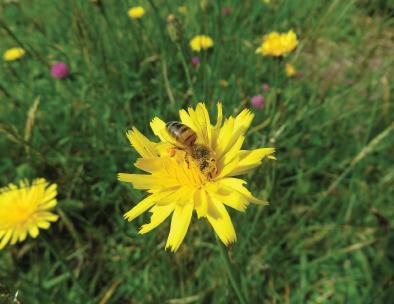当前位置:
X-MOL 学术
›
Agric. For. Entomol.
›
论文详情
Our official English website, www.x-mol.net, welcomes your
feedback! (Note: you will need to create a separate account there.)
Effects of landscape structure and climate seasonality on pollen intake by honeybees in Neotropical highland agroecosystems
Agricultural and Forest Entomology ( IF 1.6 ) Pub Date : 2021-04-28 , DOI: 10.1111/afe.12446 Paula María Montoya‐Pfeiffer 1, 2 , Adrian González‐Chaves 3 , Guiomar Nates‐Parra 1
中文翻译:

景观结构和气候季节性对新热带高地农业生态系统蜜蜂采食花粉的影响
更新日期:2021-04-28
Agricultural and Forest Entomology ( IF 1.6 ) Pub Date : 2021-04-28 , DOI: 10.1111/afe.12446 Paula María Montoya‐Pfeiffer 1, 2 , Adrian González‐Chaves 3 , Guiomar Nates‐Parra 1
Affiliation

|
- Pollen is the main protein source for honeybee brood and so colony development relies heavily on the availability of pollen in the environment. Intensification of agriculture and climate seasonality are known to alter honeybee pollen intake in temperate regions through changes in resource availability; however, little is known about how honeybees respond to such environmental factors in tropical regions.
- Pollen collected by honeybees was sampled from apiaries in a Neotropical highland region of Colombia. Pollen species were identified and the effects of landscape diversity, forest area and mean monthly precipitation on the pollen intake by honeybees were evaluated for all pollen species together and pollen species segregated according to forest and anthropic areas.
- Honeybees were found to be much more associated with anthropic than forest pollen species regardless of landscape structure or precipitation. However, pollen intake from all species and forest species responded positively to landscape diversity and forest area. Precipitation was found not to be related to the overall amount and overall richness of pollen collected by honeybees. Nonetheless, overall pollen diversity was negatively affected by precipitation in less diverse landscapes, whereas anthropic pollen diversity was negatively affected by precipitation in more forested landscapes.
中文翻译:

景观结构和气候季节性对新热带高地农业生态系统蜜蜂采食花粉的影响
- 花粉是蜜蜂育雏的主要蛋白质来源,因此蜂群发育在很大程度上依赖于环境中花粉的可用性。众所周知,农业的集约化和气候季节性会通过资源可用性的变化来改变温带地区蜜蜂花粉的摄入量;然而,人们对蜜蜂如何对热带地区的这些环境因素做出反应知之甚少。
- 蜜蜂收集的花粉来自哥伦比亚新热带高地地区的养蜂场。确定了花粉种类,并评估了景观多样性、森林面积和月平均降水量对蜜蜂花粉摄入量的影响,对所有花粉种类进行了评估,花粉种类根据森林和人类活动区域进行了隔离。
- 无论景观结构或降水如何,蜜蜂被发现与人类的关系比森林花粉种类更多。然而,所有物种和森林物种的花粉摄入量对景观多样性和森林面积有积极的反应。发现降水与蜜蜂收集的花粉的总量和整体丰富度无关。尽管如此,总体花粉多样性在多样性较少的景观中受到降水的负面影响,而人类花粉多样性在更多森林景观中受到降水的负面影响。











































 京公网安备 11010802027423号
京公网安备 11010802027423号